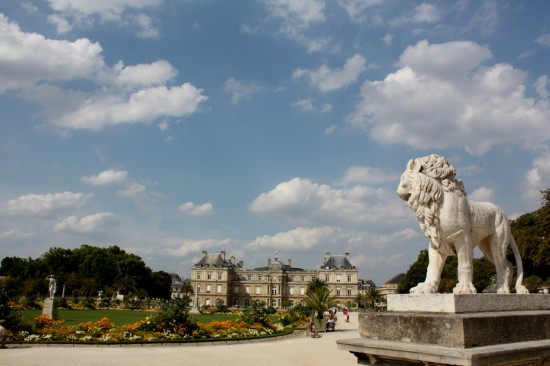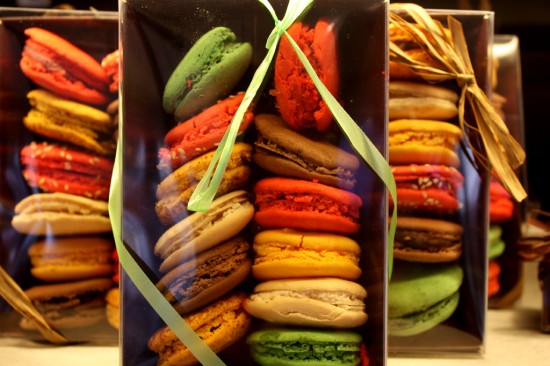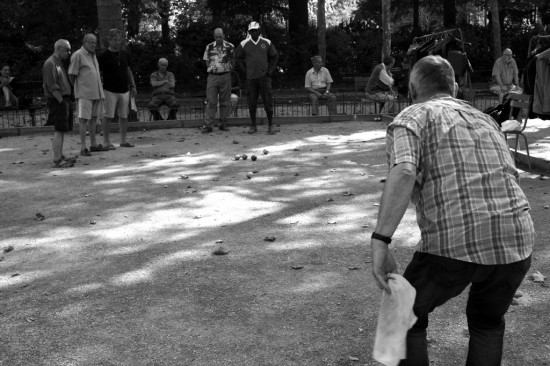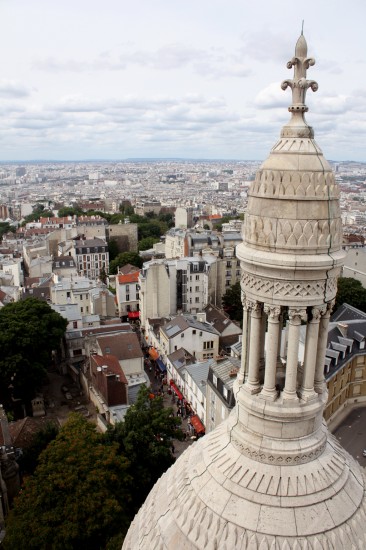There is no more photogenic city than Paris. The lifestyle and the landmarks all over Paris – the city of lights, the city of love – cry out for framing. At least, I suspected as much when I packed my camera for a family trip last summer. I wanted to capture the spirit of the Paris I felt I already knew. What I captured instead was more about me than about the famed city.
What I knew of Paris came from a lifetime of Hollywood movies like Last Tango in Paris, of books like The Hunchback of Notre-Dame and of art like At the Moulin Rouge. I knew of French cuisine and fashion, of course, but only by reputation. Friends and fellow travel writers I know and respect recommended things to do and see. Before we left home, I watched Woody Allen’s Midnight in Paris, read Hemingway’s A Moveable Feast and studied a DVD series on the great works of art in the Louvre.
If I hadn’t already, by the time I’d prepared for the trip, I thought of Paris as a city of style, of classical ideas about beauty still running through contemporary culture. Like the rainforests supply the planet with oxygen, I thought of Paris as the inspiration for all the ways the human intellect can create beauty. It was this created beauty in all its forms I hoped to witness and to capture with my camera.
In preparation for the trip, I read that Paris became the canvas for one of the world’s great city planners, Napoleon III’s prefect, Baron Haussmann. In the 19th century, he replaced medieval streets with a design that made manifest the best of what cities can become. Spared the destruction so many other European cities suffered in the wars of the 20th century, Haussmann’s grand streetscapes – punctuated by iconic buildings – survive intact, making Paris a rarity.
Because of Haussmann and the artists who flocked to Paris, in our collective imagination Paris is a city of romance and of joie de vivre, of sophistication and above all of art. Writers worked there to become great writers. Painters lived there to become great painters. Philosophers, film makers, musicians have always thrived there in a fertile atmosphere of ideas, debate and dedication to discipline.
With family, I walked and walked and walked the streets of Paris, always with one eye peering as if through the viewfinder, looking for my Paris. We walked beside the Seine, the backbone of the city, and joined picnickers, dancers and lovers. We climbed the Eiffel Tower at night and spent days inside the Louvre and Musee d’Orsay among the masters. We lounged in the Tuileries, watched games of boules in Luxemburg Gardens and drank wine in grassy parks. We strolled among the booksellers and painters, ducked into tiny shops and sipped cold beers and hot coffees at outdoor cafés. We explored the Latin Quarter where we found the Pantheon and The Sorbonne, walked along the Champs-Élysées to the Arc de Triomphe and took a river cruise. We searched for the graves of famous writers and musicians in Père Lachaise Cemetery. We climbed the steps to the Basilique du Sacré-Cœur at Montmartre, then climbed further, to the top of the church itself for a view of the city laid out before us.
In the end, when I look through my photos now, I realize I failed to capture the city. The thing about a camera, as Paris teaches, is that it sees what we want it to see. In Paris, the camera served not so much as my recording device as it did a canvas. And what the camera sees is what the photographer behind the lens is made of.
As the famous American photographer Ansel Adams once said, “You don’t make a photograph just with a camera. You bring to the act of photography all the pictures you have seen, the books you have read, the music you have heard, the people you have loved.”
I chose the subjects and framed the shots, selected the settings and captured the images at the precise moments that most appealed to me. Through the lens, I constructed the Paris I wanted to find, the Paris of romance and of style, of history and of design, of art and of food, of ideas and of ideals, of leisure and of joie de vivre. But it’s not the Paris of those who live there. It’s a tourist’s Paris. It’s Paris from the outside. I brought my camera to Paris, sure, but more precisely, I brought my Paris to Paris. I have the pictures to prove it.
Photo Credits
All photography by Darcy Rhyno – All Rights Reserved
1. Old car in front of Paris grocery
2. Luxembourg Gardens Paris
3. Fountain at Luxembourg Gardens Paris
4. Cookies in a Paris shop
5. A game of boules in Paris
6. Sacré-Cœur Basilica Paris
7. Sculpture in Luxembourg Gardens Paris
8. Window in a Paris church










Darcy, this is an evocative collection! I love your explanation: ” I walked and walked and walked the streets of Paris, always with one eye peering as if through the viewfinder, looking for my Paris.” I travel in the same manner … ’tis the way of photographers … and I never tire of capturing what my eye simply cannot resist! My husband has learned to just keep walking, knowing I will eventually catch up. I suspect your family does the same.
Thanks Patricia. I appreciate the comment from one so familiar with photographing – and writing about – France. Why don ‘t you leave a link to your novels set in Provence.
Best
Darcy
Darcy, what a delight to wander Paris through your words and your lens. It’s one of my favourite cities in the world. And, as Audrey Hepburn once said, “Paris is always a good idea.”
Thank you for bringing your Paris to Paris.
Thanks Tess. So glad you enjoyed them. Love the touch of class that the Hepburn quote brings.
Hello Darcy!
Thank you very much for sharing this post and for sharing these nice pictures. I really love to take pictures and one of my favorite place is Paris.
-Abby
Thanks for taking the time to look through the pics and the article, Abby. Glad you enjoyed them and brought to mind your own Paris experience.
Darcy
Really interesting comment, Fornan. I’m glad you pointed out that the destruction of the old Paris was and maybe still is to some too great a price to pay. I don’t know enough about the history of the city, but suspected there must have been a lot of controversy. And that is my point, that I realized as I took these photos that I was recreating the very limited romanitcized Paris that I know from popular culture, and in the process possibly burying other sides of the very city I came to admire as a tourist.
Great article. Makes me wish to return there, some day, before I get too old…
Nonetheless… The Paris you admire is a construction of the mind, well marketed also.
Many great writers and some painters from the 19th century — Beaudelaire, Hugo, among others — deplored and protested the destruction by Hausman of the old Paris that they so loved. This “renovation” of Paris led some intellectuals to create movements and organisations to protect the heritage of theOld Paris from change.These movements were the forerunner to contemporary heritage efforts throughout the Western World. You should also study the photography of Eugene Atget who recorded what Paris looked like in the early decades of the 20th century, before it disappeared… not only the buildings but also a way of life. This, in turn, inspired another photographer, Berenice Abbott, to record the change of the urban landscape of New York city, in the thirties and fourties.
It is true that Paris is a romantic city. I also loved it when I rambled through its streets in the fall of 1971. I didn’t have a camera then. But the images remain in my mind… sweet memories, of sights and its people.
Wonderful article and great photos, Darcy. Did you ever see the film Paris, Je T’aime?
No I haven’t, Ross, but I’ll look it up. I saw the recent film Hugo before I went to Paris and didn’t realize until I got there that it was shot inside Musee d”Orsay. Love discoveries like that.
Hey, Darcy — good insight. Wouldn’t it be fun to put together the selected view of a random 10 people and see what Paris looked like then. Your choices are pretty lovely but the Deux Chevaux stole my heart. I used to love them as a kid — they still had sling canvas seats and who knows who the winner would be in a head-on with a bicycle.
Thanks for the memories, Gwen. Great idea to put sets of pics side by side. Love it.